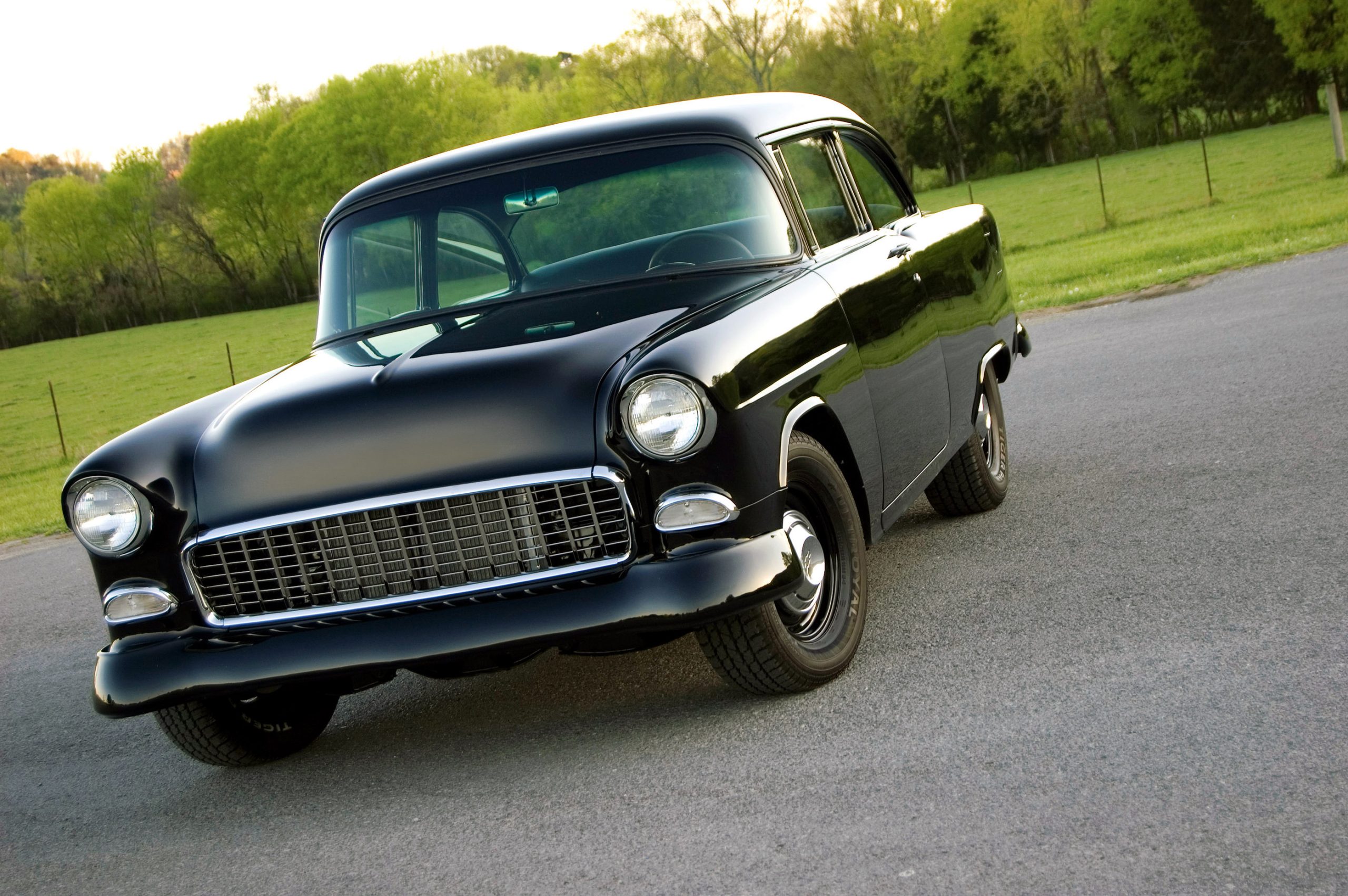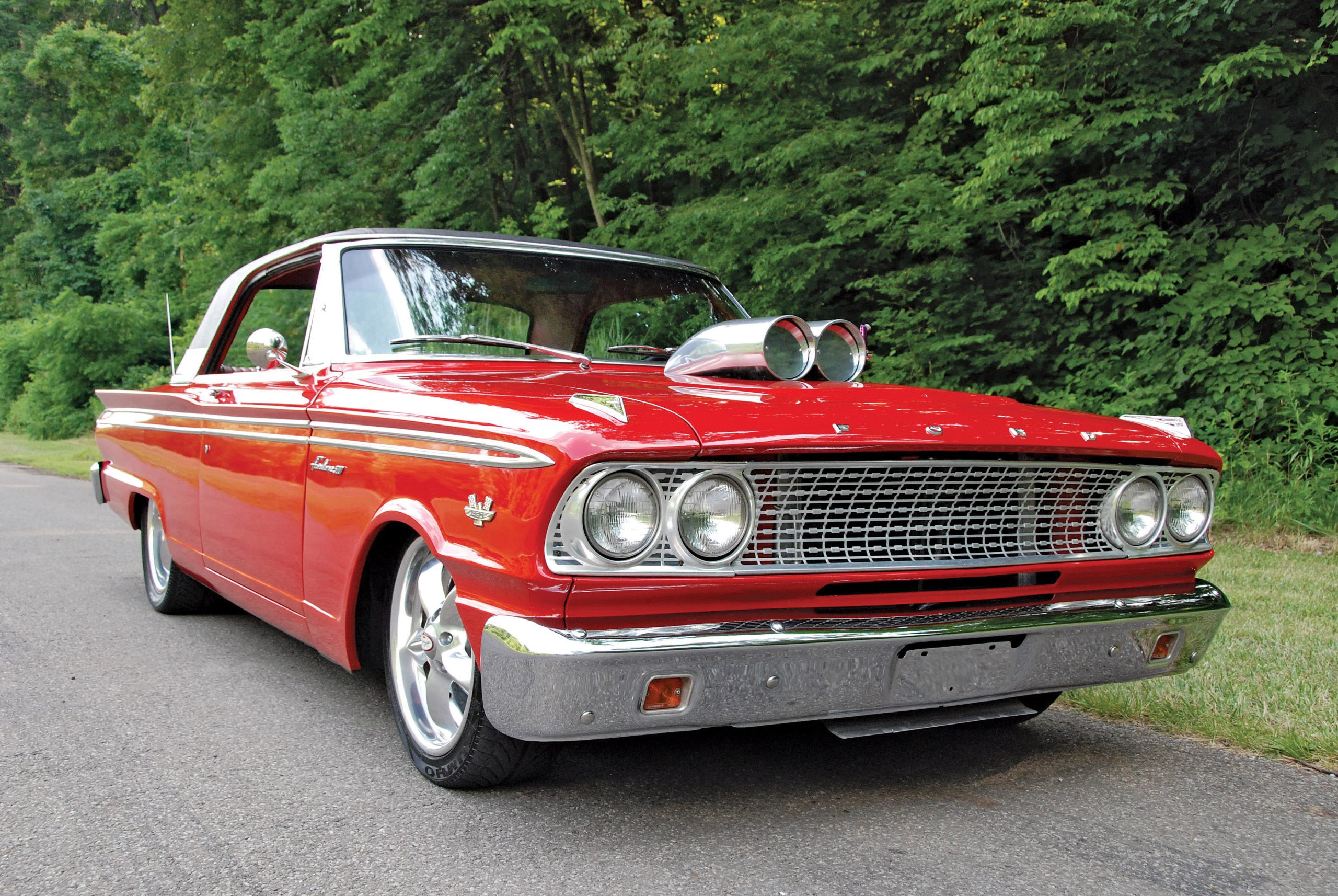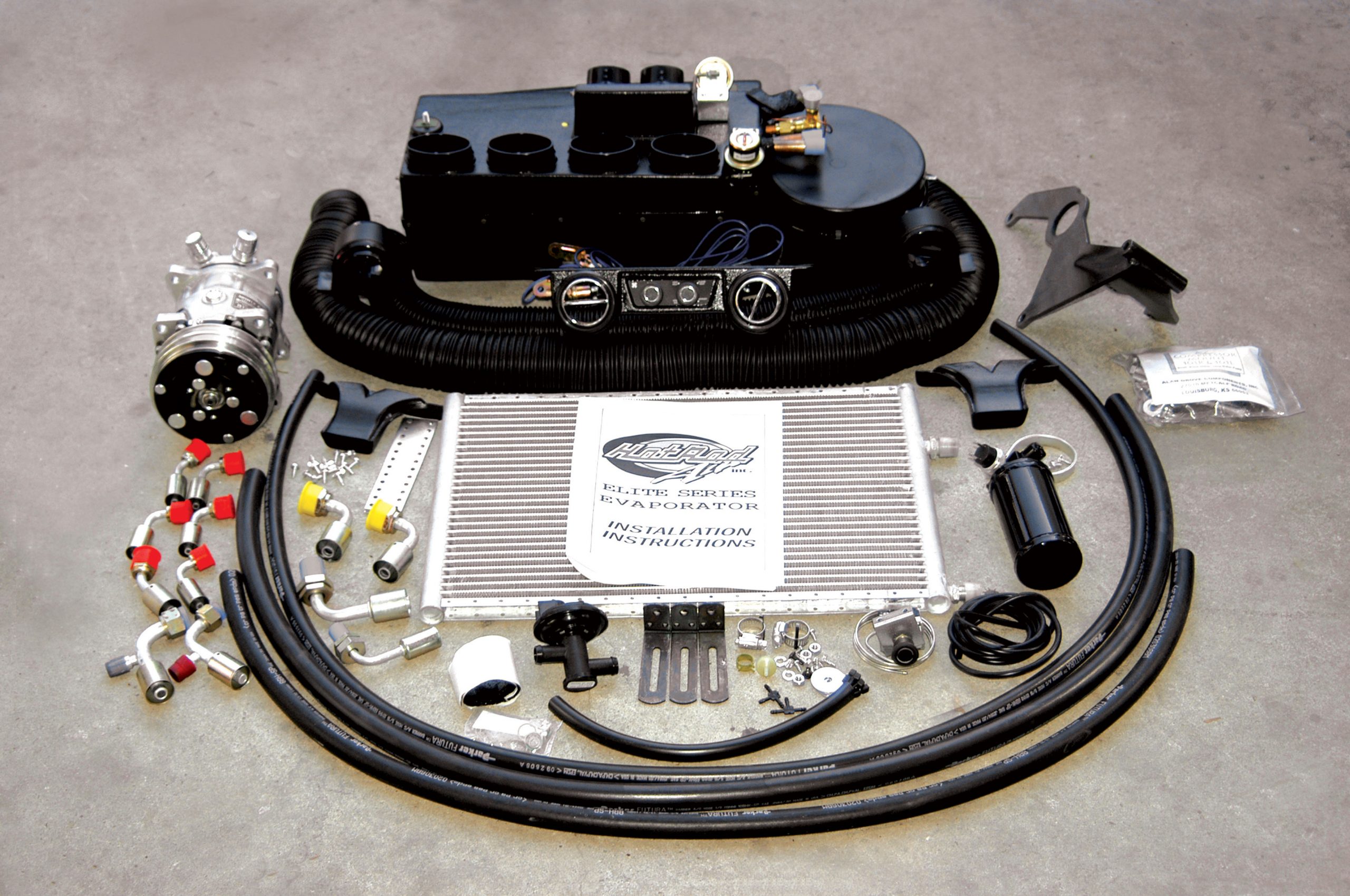We Dispel the Myths About R12 and R134a Refrigerants and Walk You Through Important Concours-Restored and Aftermarket System Problems

Typically, winter isn’t the time of year when we are thinking about a car’s air-conditioning system…or is it? It’s understandable that we would tend to think about “fixing” the A/C during the dog days of summer, July or August, but once the car is put up for the winter, those hot and humid days are often forgotten. And short of those comfortable windows-down driving months, when we first pull out the car again for the next season, it’s smart to think about giving the A/C system the attention it needs. So, we think this is a great time to present to you troubleshooting highlights so that you can rip into the car and upgrade the necessary areas before the cycle continues.
Winter is the perfect time to rebuild, restore or replace your car’s A/C system. It’s not a small job and it will require that your car be off the road for a while, so the time is ideal if you believe your system needs attention. And if not, perhaps there are some facts presented here that will help you fix some A/C cooling problems of your own. Initially, we were prompted to do this article after reading some posts on a website regarding R12 Freon vs. the “new” R134a coolant.

R134a refrigerant has been used in cars for years now, but a lot of questions remain, and unfortunately there’s some bad information out there regarding it. The most frequent argument against its use is the idea that R134a doesn’t cool as well as the old R12 Freon. We’ll cut to the chase on this big one, as it evidently looms in the minds of many enthusiasts.
When R134a was introduced and was being installed on cars that were originally equipped with R12, it is true that R134a did not cool as well or as efficiently. The problem at the time was that technicians were recharging the systems with the same amount of R134a that the manuals specified for R12. The result was that the systems didn’t cool properly. Eventually, the solution was found to install less R134a refrigerant, about 80 percent of what was specified for R12 refrigerant. There are also some internal controls that need recalibrating when making the change. And if these are not done, the evaporator will freeze before the cabin is cool, resulting in no air moving over the evaporator coils, again resulting in no cool air flowing out of your A/C vents. Once these problems were discovered, techs started properly servicing R134a-equipped A/C systems, and they cooled as well as the old R12.

Now, you can still find plenty of guys who continue to believe that R134a isn’t as cold as R12, and frankly, this article is not going to change their minds. We are not going to try, and they will continue to run R12 until the last can of Freon is sold on eBay. But judge from your own experience when you are driving your new car. The A/C system is plenty cold enough to make you uncomfortable, even in Florida in August, and you find yourself turning it down from full blast. And it’s filled with the new stuff. An A/C system doesn’t know what kind of vehicle it is installed in, as long as it is installed and serviced properly and the correct components are used. We’ve done conversions to R134a, and our own experience is that when it is done correctly, it is just as cold as the old Freon, and we’ve seen a thermometer installed at the A/C vent that bears this out.
To be honest, we thought by this time that the whole “Freon versus R134a” debate was over, but after reading the long list of replies on the Internet, we learned that there are still a lot of questions concerning converting old systems to the new refrigerant. We got in touch with Al Sedita of Classic Auto Air (CAA) in Tampa, Florida—a state that demands proper A/C operation—and asked him to shed some light on the topic and help us out with this story.
Classic Auto Air has been restoring A/C systems for more than 20 years, and when the industry converted to R134a, CAA was there from the outset. As a result, CAA amassed the knowledge and expertise to fully restore complete systems to concours quality, convert them to R134a, or a combination of the above.

When converting from R12 to R134a, first there are a couple of parts that must be changed. This is necessary not only so that the system will blow cold air, but also to keep the parts from eating themselves. This was a problem in the early days, and R134a earned a reputation for destroying compressors. The main culprit is the desiccant pack in the filter/dryer (also called a receiver/dryer).
To start with, most people don’t realize the filter/dryer is a perishable service part, just like your oil filter or air filter element. It should be changed at regular intervals, or any time the A/C system is “opened up,” such as when a line is changed or the compressor is replaced. However, the majority of cars with factory A/C still have the original part in place. As you can imagine, by now there is probably a whole lot of “yuck” inside your filter/dryer that isn’t doing your compressor much good. Compounding the problem is this: when people first began converting R12 systems to R134a, the desiccant material originally used with R12 was found to be incompatible with R134a. It would break down and turn into a system-ruining goo that essentially clogged the system.
Classic Auto Air has developed a technique to completely restore your car’s original filter/dryer, which includes cutting it open and replacing the desiccant bag with a new pack that is compatible with both R12 and R134a. When finished, the dryer looks brand new and will work in concours-restored or updated systems.

Another item that must be addressed when making this switch is the POA valve. The POA valve (STV or hot gas bypass valve on earlier systems) regulates the flow of refrigerant out of the evaporator coils. The internal mechanism that opens to allow the flow is pressure triggered. With R12, the pressure required is 30 pounds, but it drops to 20 pounds with R134a refrigerant. If R134a stays in the evaporator long enough to build to 30 pounds, the coils will freeze, and that “trips” the system off. CAA not only restores these valves to like-new appearance, but it also makes the necessary internal changes so that the valve triggers at the proper 20 pounds of pressure.
Also in the earlier days of the R12/R134a “overlap,” swap hoses were a major concern. The R134a refrigerant requires a barrier lining inside the rubber hose, or the refrigerant molecules eventually seep out of an unlined rubber hose; R12 rubber hoses required no such barrier. Used R12 lines were considered “seasoned,” as the R134a couldn’t seep through lines that were already impregnated with R12. However, when A/C shops and suppliers still had a supply of R12 hose in stock, it was important to get the proper style of hose if you were having fresh lines made. Today, because R134a is the industry standard, there is no reason to continue making A/C hose that doesn’t have the barrier, particularly since R12 can be run through a barrier hose with no such problems. In other words, the concern about hose compatibility today just isn’t an issue as it was a few years ago, because nobody should have non-barrier hose still sitting on their shelves.

Although not as much of a concern when rebuilding and updating a stock system, many rodders continued to find R134a systems to be lacking, which perpetuated its bad reputation. But according to CAA, this isn’t so much a problem with the refrigerant and component settings as it is with the size and style of other components, mainly the plenum box and ducting. “A lot of the aftermarket kits were designed around a couple of different ‘universal’ plenum boxes,” Sedita told us. “These boxes are small because they were designed for street rod applications where space is at a minimum.” A box designed to move enough air for a Model A street rod is not going to be up to the task of moving all the air required to cool a larger passenger compartment, such as an early Camaro or especially a tri-5 Chevy, which have considerably more area than the smaller street rod passenger compartment. If you actually sat down to think about this, it’s easy to see that it makes perfect sense. Additionally, because these boxes are small, there typically isn’t enough room in them to allow separate coils for the heater and A/C system. This means that part of the cooling coil is used for the heater, with the same ductwork and control operation of both systems, heat and cold. On a full-sized OE-style plenum box, there are separate, full-sized coils for heat and cold.
Knowing this, CAA took a different approach to designing retrofit A/C systems and developed the Perfect Fit line. Because his company started as a restoration house for factory A/C systems, Sedita is well versed in the design, function and size of OE systems and he based his kits on those OE specs. What this means is that the plenum box, evaporator coil and blower motor for your big ’67 Caprice isn’t going to be based on a system that is only up to moving enough refrigerant and air to cool a pickup cab. The Perfect Fit systems are designed to bolt into the original locations and can be ordered with aftermarket polished aluminum compressors, filter/dryers and vents, giving you the best of both worlds—a factory fit and function with aftermarket looks.
Classic Auto Air has been around for more than 20 years and has been through two dramatic shifts in the hobby—the shift from hardcore concours restorations to modified drivers and from R12 to R134a refrigerant. As a company, it’s always been able to implement these conversions and is able to provide you with whatever you need to keep your cool, the right way
UNCOOL
The automotive aftermarket, refrigerant industry and, oh yeah, the federal government, recognized R12 and R134a refrigerant as being acceptable only for automotive use. Duracool 12a, HC12a, OZ12 and other refrigerants are illegal to use in automotive A/C applications. We know there are other products out there, and their effectiveness in cooling your system isn’t in question. We’re not questioning any of them because we’re not considering them in our applications.
There are several reasons for us to take this stance, the first being that we like our local mechanics. Their A/C recovery systems are set up to handle R12 and R134a only. When you run something different through their systems, it contaminates their equipment and holding cylinders. At that point, you will contaminate every other car the shops work on. Furthermore, because their chemicals are contaminated, they will have to pay a hefty fee to have it properly disposed of.
Not your problem, you say? These other refrigerants will react with R12 and R134a and turn into a highly corrosive solution that will prematurely wear your components. Those other refrigerants are approved for use on industrial chillers and commercial refrigeration systems, which are fully plumbed with hard lines, not rubber hoses, which can be cut or broken during a traffic accident. This is a factor because these refrigerants are reported to be flammable. Now, we haven’t heard of any cars using them bursting into flames during a fender bender, and we’ve heard some people claim that R12 and R134a are just as flammable or more so, but that isn’t our call to make. All we know is this: the law mandates we use R134a in new cars; cars originally equipped with R12 can continue using it; and the issue isn’t a windmill we feel the need to charge at.
A/C SYSTEM DIAGRAM
 We borrowed this diagram of a complete A/C system from a Year One reproduction factory shop manual. The factory put it in the shop manual to fully and clearly explain all the components of the car’s system to its technicians, and since we didn’t think we could improve upon it, we decided to reprint it here. Study the chart to familiarize yourself with all of the parts, how they relate to one another and what their functions are.
We borrowed this diagram of a complete A/C system from a Year One reproduction factory shop manual. The factory put it in the shop manual to fully and clearly explain all the components of the car’s system to its technicians, and since we didn’t think we could improve upon it, we decided to reprint it here. Study the chart to familiarize yourself with all of the parts, how they relate to one another and what their functions are.















